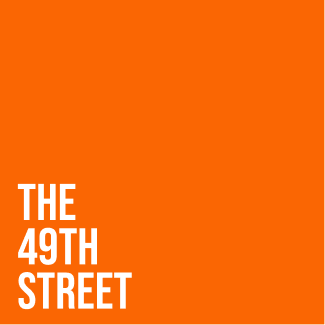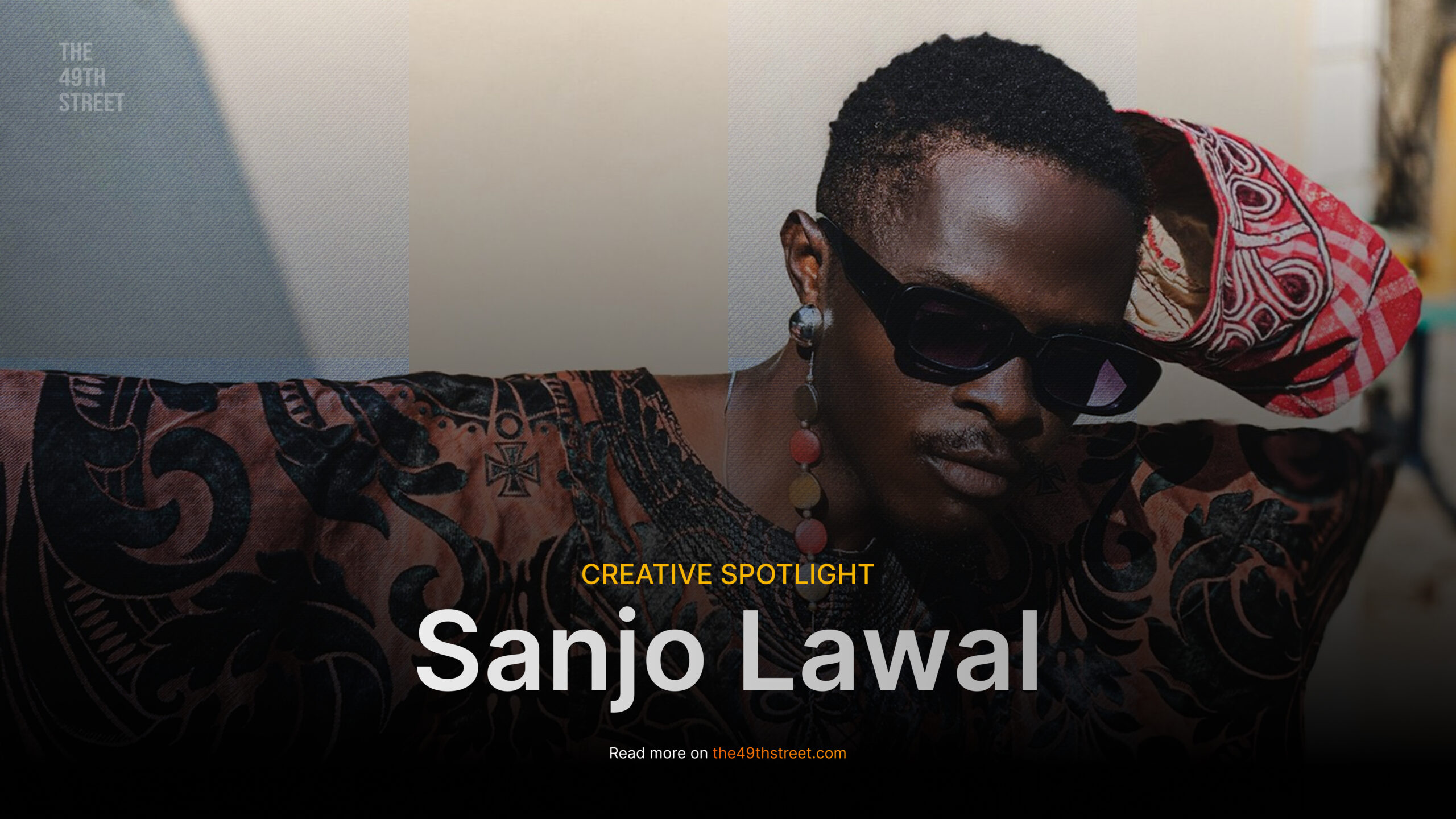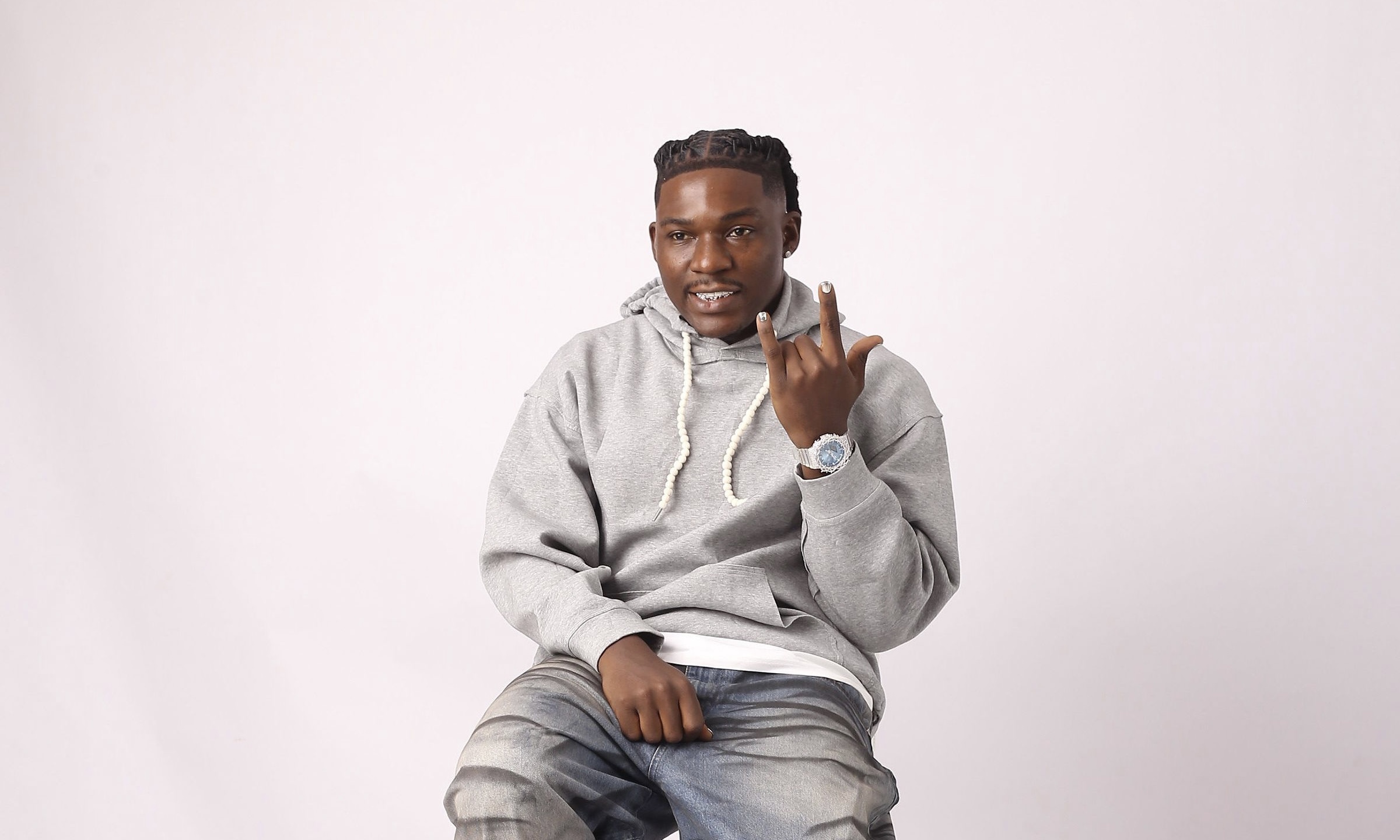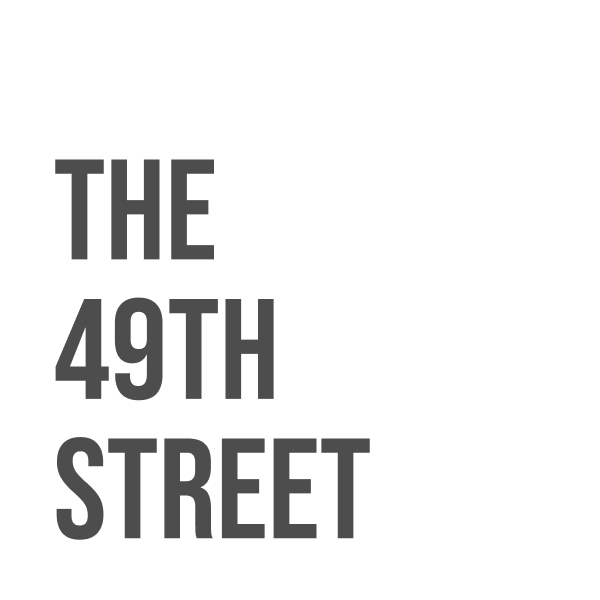Sanjo Lawal, better known as Artsman, is a Lagos-born creative who doesn’t just make art; he lives it. From photography that ranges from evocative storytelling to head-turning fashion collaborations, Artsman is a jack-of-all-trades with one rule: no box can hold him. In this conversation, he opens up about turning the little things around him into storytelling gold, collaborating with his models, and channeling Lagos’s relentless energy to fuel his wildest ideas. He also walks us through his creative process, influences, and vision with exclusive insights.
What does art mean to you?
Sanjo Lawal: Art is everything to me; without art, I cannot breathe. So, basically, I’m a full-time artist. It is everything I do because this is what I’m best at. You know, from my name, I said “Artsman” it is not just a joke. I am a multidisciplinary person. You see me watching cartoons, listening to music, and seeing paintings, sculptures, and photographs. Art is everything. Art is life. Art is death. Art is everything.
Concerning your name, “Artsman”—did you name yourself?
Sanjo Lawal: It came from myself, but I have always had friends that always tease me like, “Guy, what particular thing you dey do gon?” I was all over the place. I love fashion and music. Before, I used to dance everywhere like a hustler. It is just from being a weird kid in Lagos, Naija. You know, it can be funny to be everywhere (doing everything).
I also wanted to do music, but for now, I’m in fashion with my brothers, who are co-founders, creative directors, and assistants. That’s just an example of why I’m referred to as an “Artsman.” In the near future, we could put our hands on music, maybe video. I used to like to shoot videos, too. I just know I want to put my hands on everything. It is like a bouffe: salad dey, dodo dey. But for now, I eat more jollof rice, which is my photography.
How did you encounter art itself?
Sanjo Lawal: I’ve been consciously and subconsciously involved in art. So it started with my brothers and me. I just unconsciously scribbled all the time. I liked to draw everywhere. We grew up with comics and watching cartoons, which brought the spark. There used to be magazines in my house from my mom. You know, flipping the pages when social media wasn’t rampant then.
So there was an obsession with “How are these people doing it?” all these photos and everything. I used to fall in love with cartoon scribbling and photography, and I’ve always admired some documentary photographers, even the likes of Fela and the performance and the backup dancers (documented photos). I couldn’t explain it, but I knew something was going on here like, “How?” I want to understand it.
So that obsession brought that encounter. And where I’m from, I am from Ijebu Ode. You know, there are always parties and everything. There are some kind of artistic elements you see when you travel there, in the building sculptures. They might not be well-maintained, but I will see them and be like, “What is happening here?” So my environment also contributed to what made me an artist today.
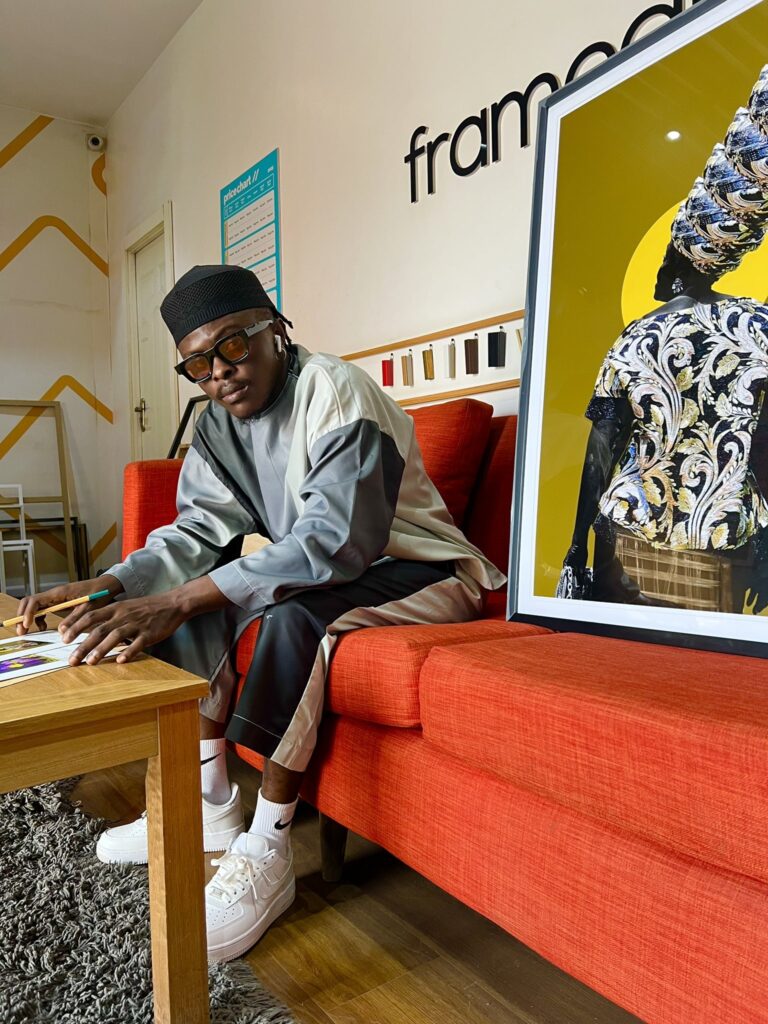
How do you use color in your work?
Sanjo Lawal: To be honest, I don’t tend to think about it with the colors. I like to work with colors for days; I just like to have fun with them. While still having fun, I feel colors have their symbolism. For instance, green is basically Nigeria with natural resources. So sometimes I lean into colors to tell a story, and sometimes it could just be the energy I am feeling at the moment—what’s matching my creative juice at that moment. I tend to just be like, “This is what I want.”
I grew up in a place where my mother had her garden, so there was color everywhere. My mom sells fabrics too, she sells lace, which is a big inspiration. So we see colors every day in my house: packing the Ankara and laces to the shop, wearing them. Those are the infusions and stuff that integrate into my head. That is why I feel I could be confident with playing with colors.
How does Lagos influence your art?
Sanjo Lawal: Lagos is the OG of everywhere in the world. I’ve had the opportunity to see some other places in Nigeria, Africa, and beyond. So, when going to some other places in Africa, you feel calm and relaxed, with no need to rush. But when it comes to Lagos, it is a mix of Coke and whiskey. Everywhere is bubbling; everywhere is crazy (lively). As an artist, Lagos is an inspiration to me, Sanjo Lawal, in my work, because you can be in Ojota, take a stroll, and see a Hausa man, Igbo man, or Yoruba man having a beer and listen to their crazy experiences.
If you’re a storyteller, there is definitely a way you can just make an infusion of stuff. Lagos made me make one of my arts, 7 Days Up and Grinding. Lagos is deeply involved in the inspiration of that. I’m taking a stroll to see around the city and have a bottle of beer somewhere. I believe in spontaneous experiences, so I need to have spontaneous activities like, “What’s up for today? Let’s go see what is happening.” I’ve stayed in different places in Lagos, and I know the mix of most things. It has embedded crazy inspirations in me.
How and why do you use improvised materials?
Sanjo Lawal: Why and how? It was not on purpose; it was improvisation because till now, it is still in my skill. I didn’t use a camera because I had to work with what I had. I’ve always been in love with this craft, and I actually want to capture things fast at the moment. So the improvising materials was just like using what I had at that moment. I found out that I could actually still be creative with these things, so let me just embed all these things into what I am doing instead of waiting till I have the proper equipment. And that is still what I do till now.
I think everyday objects also tell a story, like the bowl you use in your house. All these things tell a story, especially in my parents’ house. Things around me play a big role in what I make. We always improvised a lot while growing up. These materials are mostly around me.

What percentage of your work is photography?
Sanjo Lawal: 100 percent of my work is photography first. Before going through any editing source, I’ve to have the idea and composition in my head, which will be taken as a picture first. So that is the first step. The other post-production stage and editing come after because I already have my vision.
How do you get people to model for you?
Sanjo Lawal: Most people you see in my art are my family. I’m a family-oriented guy, just like my brother’s business, Brothers Lawee, just me and my brothers. For instance, the female most prominent figure in my work is my mom. If she is all dressed and ready for a party she is going to, she will model for me, and I will take the photo with my vision. Then I have my grandma in one or two pieces. There is my dad and my brothers. Sometimes I just use my friends, but most of the time it’s family.
Could you walk us through your process for creating The Time Custodian?
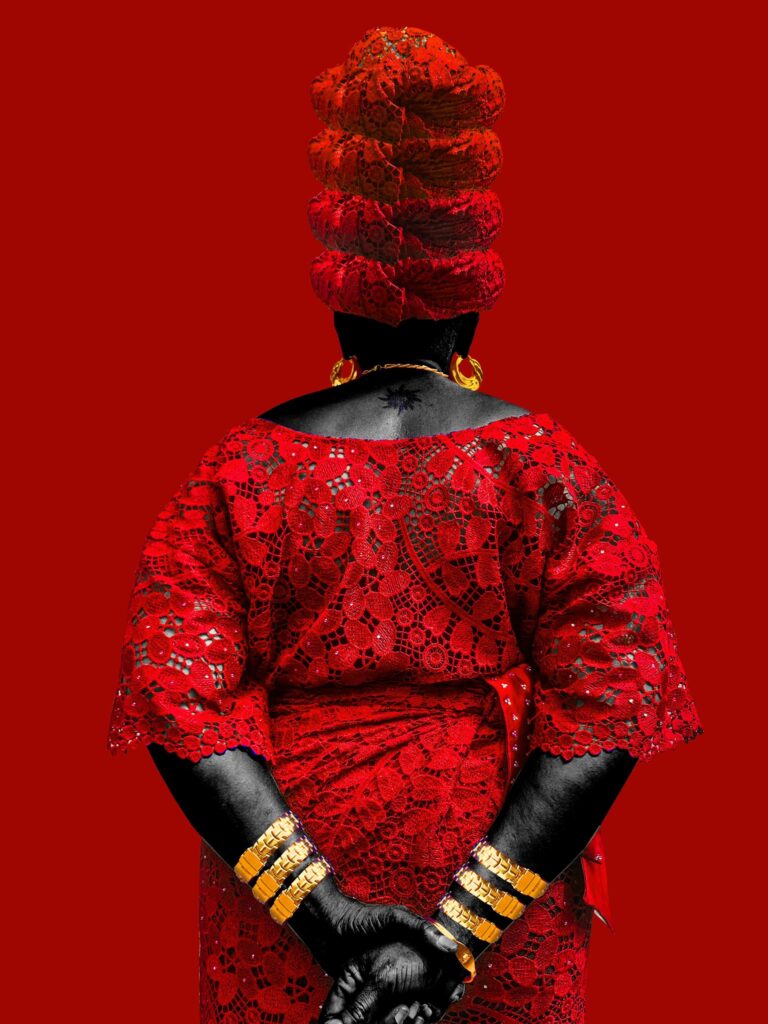
Sanjo Lawal: Time Custodian is actually part of one of the first pieces I made when I started this series Heavy is the Head. It is what birthed this exaggerated head tie I do. In my art, the head ties are unusual; the gele is bigger than what you see regularly. You can’t see someone rocking it casually unless crazy people like me. So Time Custodian is just basically waiting for something.
It could be an artist like me who wants to go global, who wants to sell a piece, or someone waiting for a child. Now, I’m sending a message to everyone waiting on something that, “Yo, don’t lose guard, have hope, things are going to be fine.” You can see the amount of watches on her wrist; she is kinda in a hurry but maintaining balance at the same time. In that piece, I’m also sharing our elegance as a people with the clothes. I tend to decorate with elements.
One thing about my pieces is that there are loops and different meanings. Like a woman going to a party and waiting, another person could see it and think, “This represents Nigeria: she has been waiting all these years. The gold in her hands are natural resources that are just there, looking fancy.” The motherland figure is a woman because she essentially gives birth to different things. With the headties, the gele is telling everyone that you’re a king and queen, don’t let anyone whine you. They represent the crown, and it is heavy. Heavy is the head. The layers of these gele stand as experience.
So no matter how young or old you are, everyone has layers they’ve faced, happiness and pain. So they are visual representations of every man’s head. The head is a deep part of the body. In Yoruba, they say you should worship your head instead of worshipping any deity because the head is the central consciousness.
What’s the story behind 7 Days Up & Grinding, and how did you bring it to life?
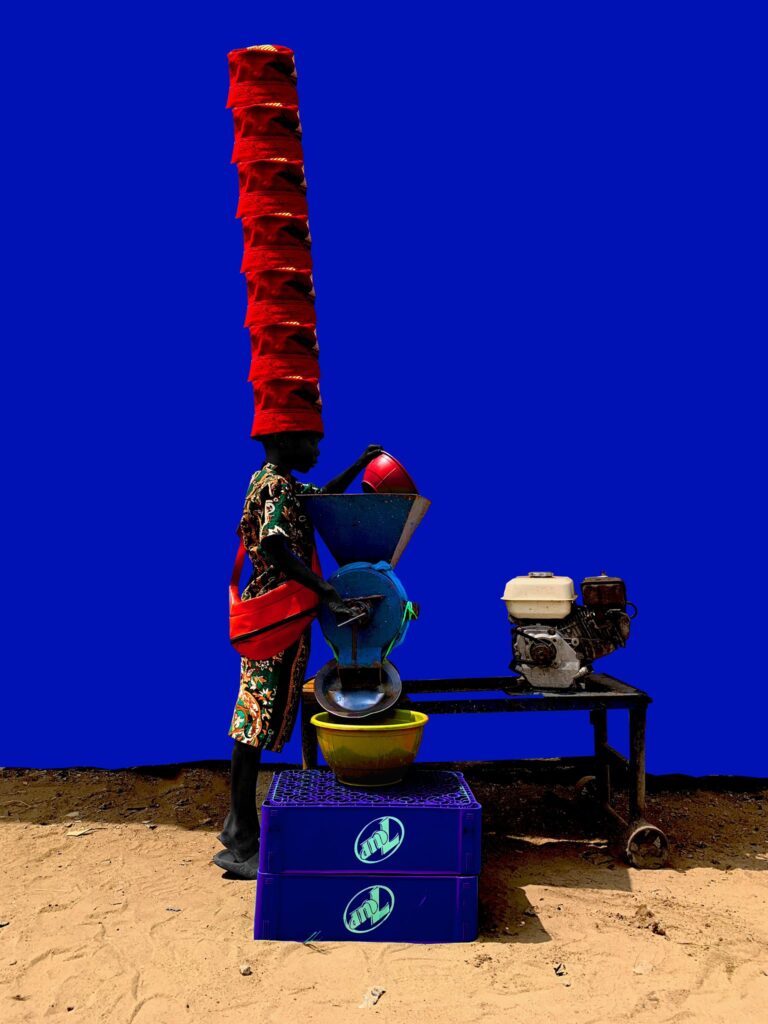
Sanjo Lawal: 7 Days Up and Grinding is a funny piece because I was making this piece already. What brought it up first is the crate, if you see it, it is a 7-Up drink crate. I was just working with that 7 Up. While working, I had a friend who came in and was like, “This is so deep: 7 Days Up and Grinding.” I did not know that the caps on the head are seven.
So when you count seven, they are seven days of the week. It is just like we are waking up every day and grinding, it is a visual symphony of dedication. The cap symbolizes the days of the week. Now, looking at the pepper machine, it is a grinding machine. Most of my work is literal. You know, when you say 7 Days Up, there is a 7 Up bottle crate, the caps are the number of days of the week, and there is a grinding machine. It is literally someone grinding.
So it just reminds everyone that before you get there, you will hustle. Because it is 7 Days and Grinding, it doesn’t mean you should not take a holiday. If you look at the piece, the boy is pouring water into the grinding machine to ease the pepper.
Describe your photography setup.
Sanjo Lawal: Essentially, I do not take any photos indoors. I am always outside; I don’t have a studio. I’m always in the streets of Lagos, just natural light. I just take a click and edit. I started with documentary photography. I used to take pictures of people on the street. The first device I used to document was a tablet. One of my aunts got it for me. Shoutout to Yatva. She is also a walking piece of art. She came from the Netherlands to share her experiences as a Nigerian and as someone who is a foreigner.
All those things are part of what shaped me: her staying at my family’s house and her experiences. I wrote her a thank-you message a few days ago. So all those little things picked up in my head. I used to take a lot of pictures of anything I saw. I used to like documentary photography so much. I used to have friends that were like, “You sure say na you do this thing?” I’m like, “Na me.” So I was now scared that nobody might know I did all this, so let me just start this. Even if it is one person that rocks with my stuff.
Tell us about your role as assistant creative director in Brothers Lawee.
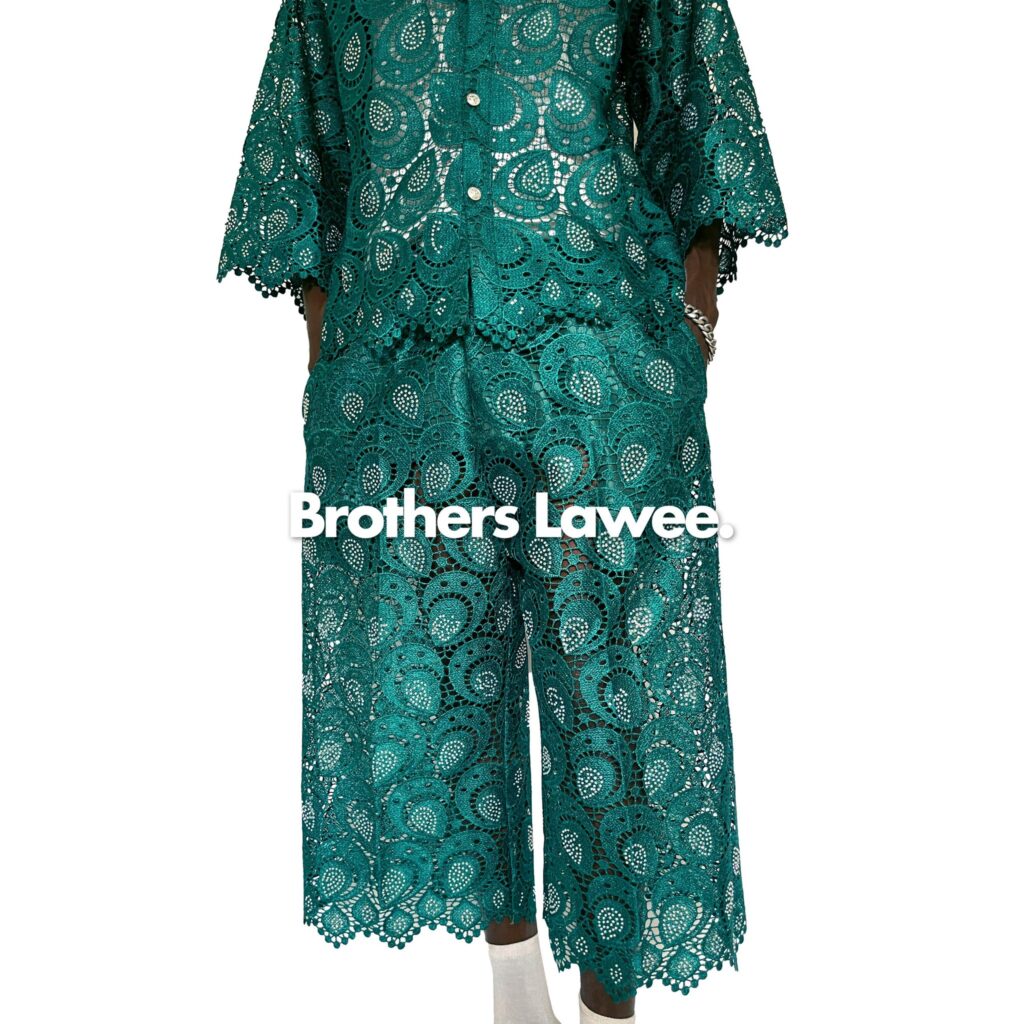
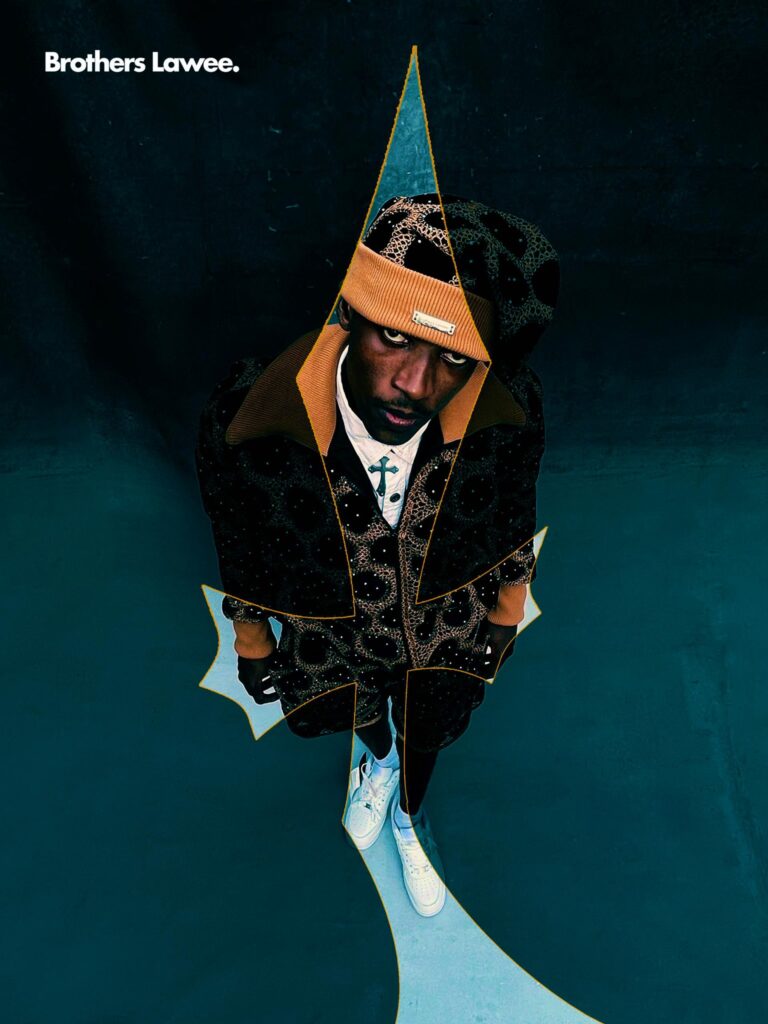
Sanjo Lawal: I am the assistant creative director. So how it came about, I mentioned that my mom sells fabrics: Ankara and lace. We used to wear normal streetwear, but we just got bored of it at some point. So basically, we have been wearing the brand for ourselves, and people just ask, “You guys should put this in public.” My brother, Lawal Mayor, is the creative director. He is also an artist like myself; he works with Ankara. There are four of us.
Were you a fan of wearing lace when younger?
Sanjo Lawal: Of course! We always wear lace very well. My parents had very expensive laces that, at any opportunity they got, they always wanted to tell us the price. We have always rocked our dad’s lace pants with some Air Force and plain tees on them. So we started buying materials, having our design layout, and wearing them.
We took it seriously and turned it into a business model, and it integrated into our art also. If you see most of my work, I mostly experiment with lace materials. We did a show in New York. It was like they could buy prints of my work and also buy the same cloth worn in the print. We are trying to work with an agency, using our clothes in my own art. It is not out yet. So everything is just interwoven.
When was Brothers Lawee established?
Sanjo Lawal: October 2024, six months old.
Tell us about your memorable exhibitions.
Sanjo Lawal: My first exhibition was when I was in school, in Yaba Tech. It was great, a beautiful feeling. You know, an exhibition for an artist is like a naming ceremony. Moving on, I had one with SMO Contemporary Art. It was great. In the same month, I went to France. I had a residency and exhibition show, my first trip to Europe with something I did at home; you could imagine the joy. It was one of my peak experiences. The show I did in South Africa was also very great, selling 26 pieces in two days. I did that this year, in February. And the latest one is at 234 Fair in Lagos.
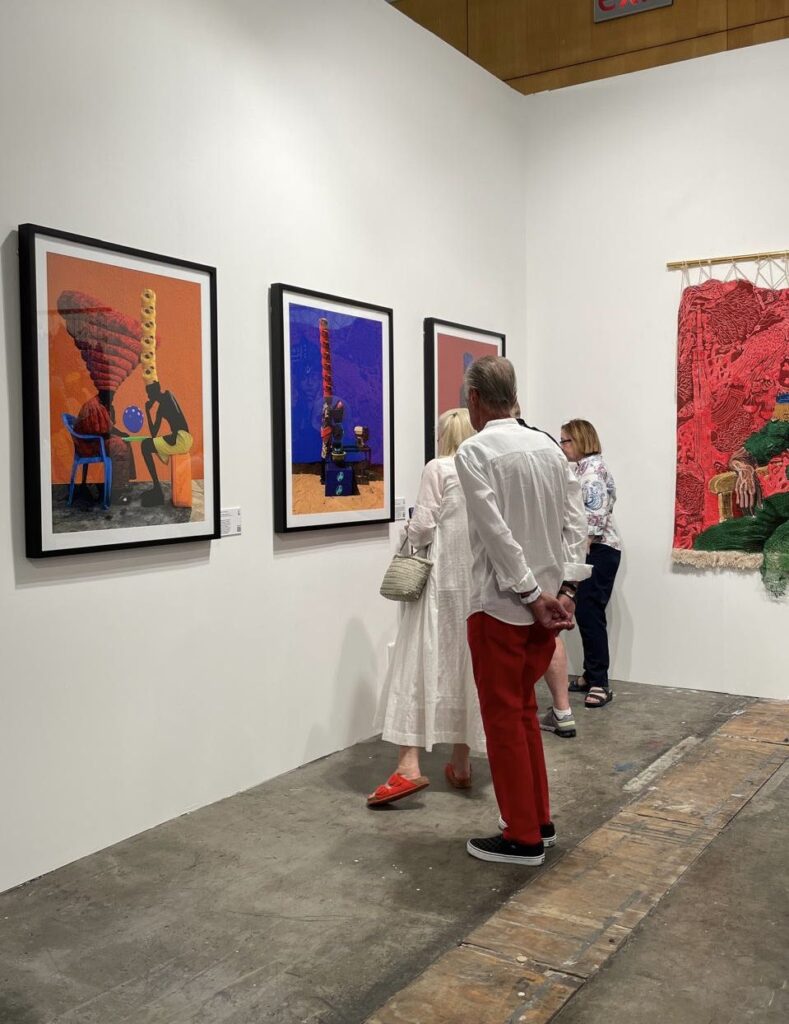
Local vs. international exhibitions?
Sanjo Lawal: Both experiences are crazy (great). For my latest one at 234 Fair, I was there with my brother in our brand Brothers Lawee. I was in my stand, and the perception was crazy (really good). People related to it well. Overseas experience is very beautiful too.
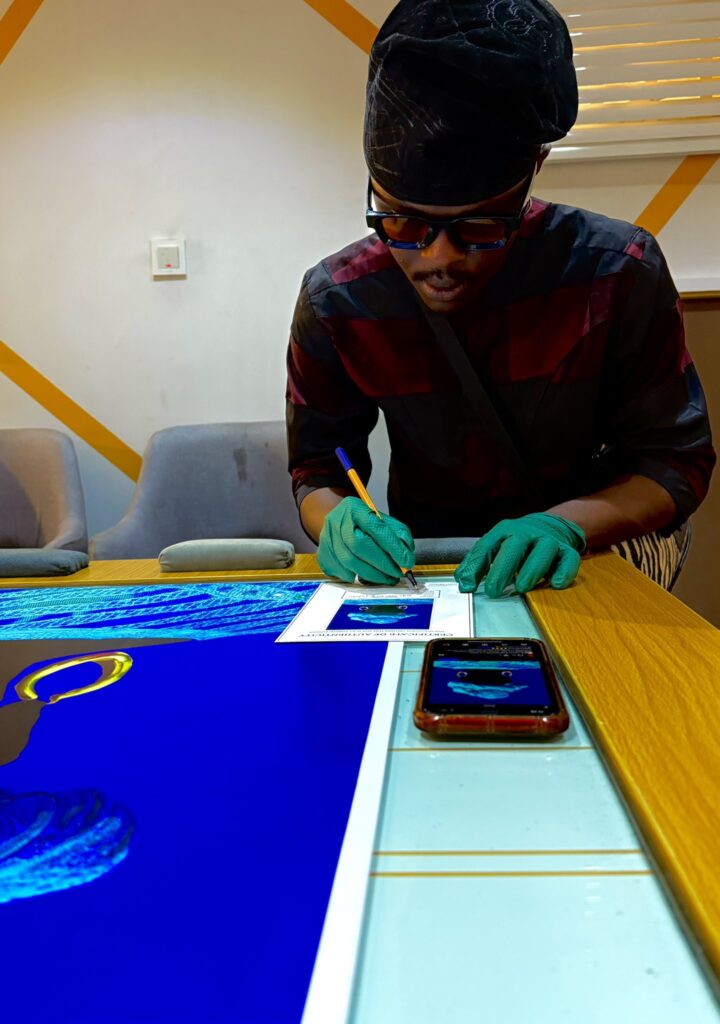
What is your untold story?
Sanjo Lawal: My untold story is to tell everyone (through my art) to just be a king in your path. I hope the stories of my art can touch people in the world.
